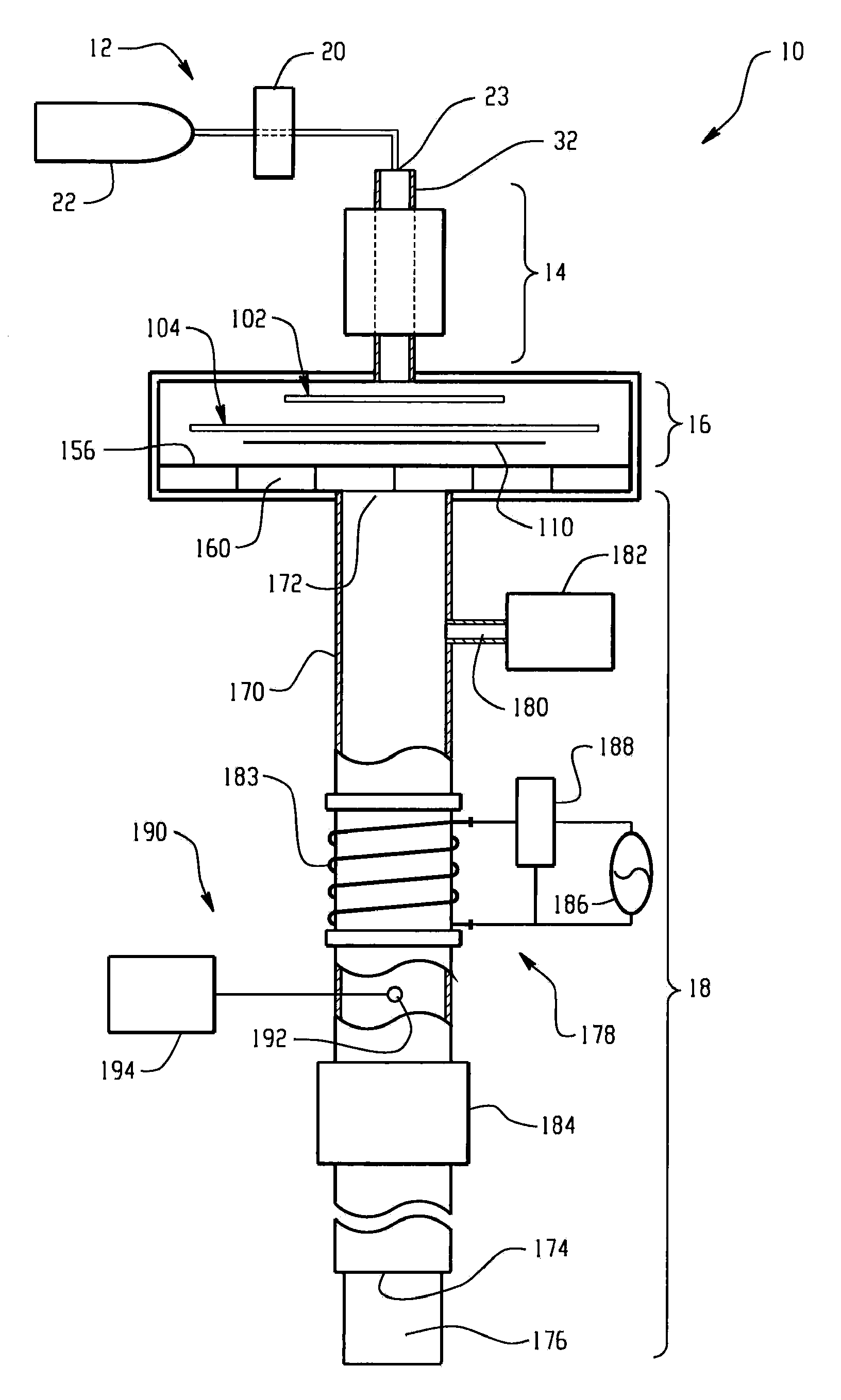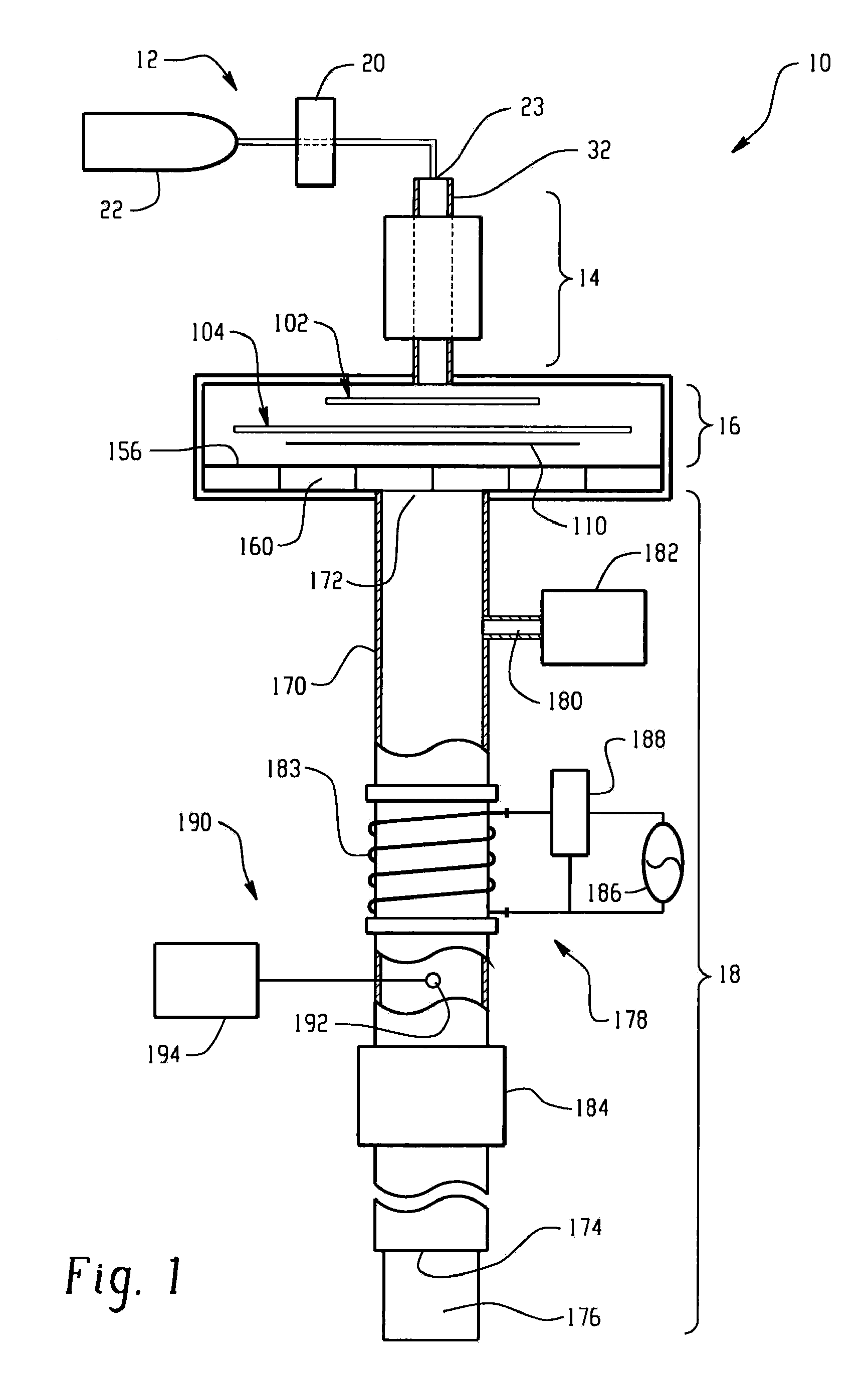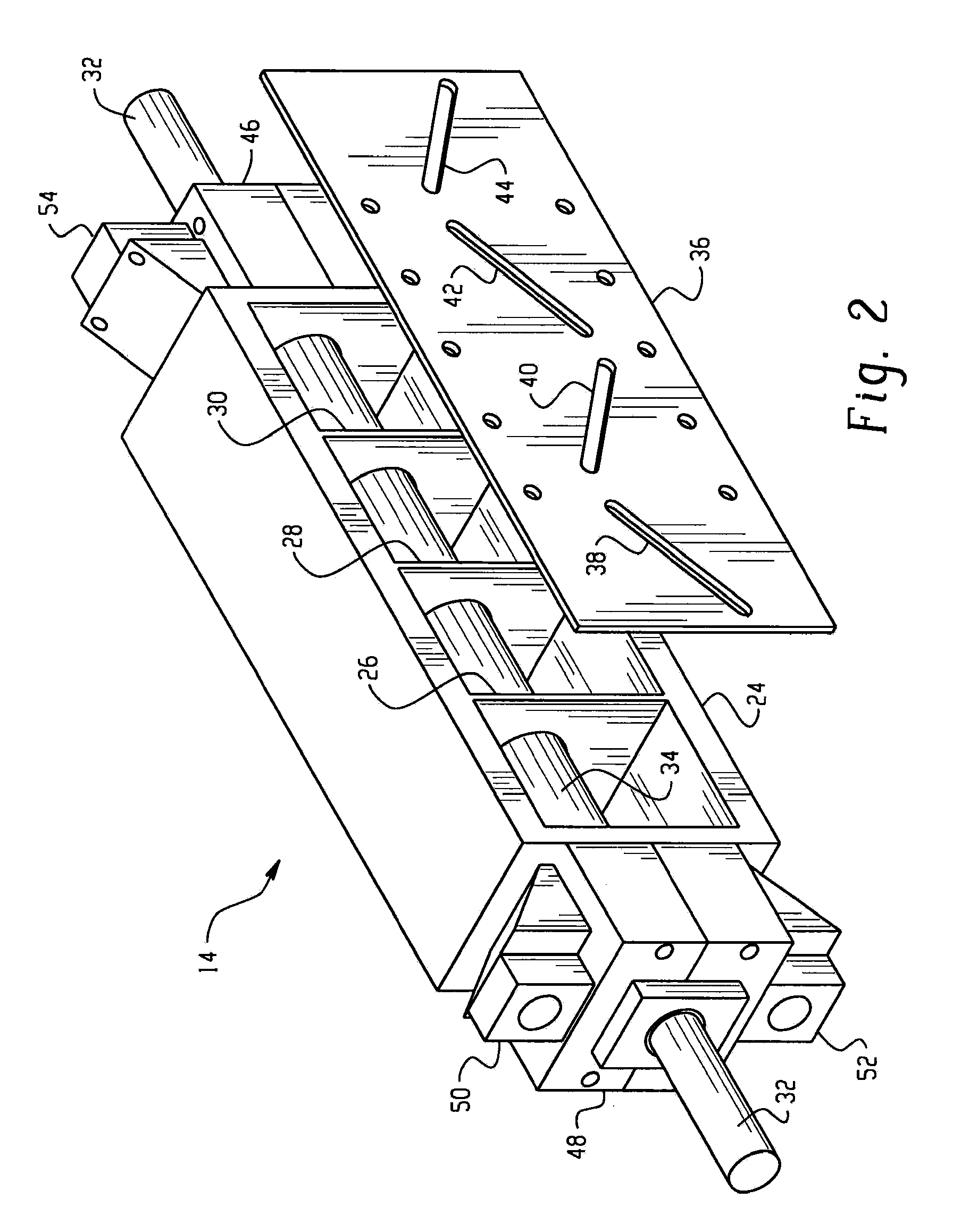Plasma ashing apparatus and endpoint detection process
a technology of endpoint detection and plasma, which is applied in the direction of photomechanical equipment, semiconductor/solid-state device testing/measurement, instruments, etc., can solve the problems of limiting the overall chip speed, material loss, and increasing the dielectric constan
- Summary
- Abstract
- Description
- Claims
- Application Information
AI Technical Summary
Benefits of technology
Problems solved by technology
Method used
Image
Examples
example 1
[0082]In this example, optical signals for OH and H were monitored in the exhaust gas conduit downstream from an afterburner in a plasma ashing apparatus as shown in FIG. 1. Helium was introduced into the plasma apparatus at a flow rate of 7,000 sccm and at a pressure of 1.5 torr. A substrate containing photoresist was exposed to heating lamps to slowly heat the wafer to 300° C. and volatilize organic matter from the wafer surface. No plasma was created in the process chamber at this time. During operation of the afterburner at an RF power of 500 W, oxygen gas was introduced into the exhaust conduit at a flow rate of 1,000 sccm. No oxygen was introduced into the process chamber. The optical signals for OH and H were monitored in the exhaust conduit over a period of time to determine endpoint of the plasma ashing process in the process chamber. FIG. 9 graphically illustrates light intensity for these optical signals as a function of time. It was observed that as the organics sublimed...
example 2
[0083]In this example, CO2 was monitored in an exhaust conduit of a plasma asher apparatus as shown in FIG. 1. CO2 was monitored by a residual gas analyzer with and without plasma formed by an afterburner disposed in the exhaust conduit. Similar to Example 1, a resist coated wafer was slowly heated to 300° C. in the process chamber without exposure to plasma. Helium was introduced into the plasma apparatus at a flow rate of 7,000 sccm and at a pressure of 1.5 torr. During operation of the afterburner at an RF power of 300 W, oxygen gas was introduced into the exhaust conduit at a flow rate of 1,000 sccm. No oxygen was introduced into the process chamber. FIG. 10 graphically illustrates CO2 generation as a function of time resulting from generating plasma in the exhaust conduit. If the afterburner was not used, no detectable CO emission would result. However, exposing the organics from the process chamber to the afterburner resulted in strong emission of CO It is noted that within th...
example 3
[0084]In this example, dilution tests were performed to determine the minimum upstream helium flow rates to prevent backstreaming of the oxygen gas into the process chamber. Oxygen was flowed at a rate of 1,000 sccm into the exhaust conduit. A helium gas was flowed into the plasma apparatus initially at a flow rate of 7,000 sccm and was stepwise decreased. Residual gas analysis was taken upstream of the afterburner to monitor partial pressures of helium, nitrogen, and oxygen. FIG. 11 graphically illustrates partial pressures of helium, nitrogen and oxygen as a function of time and dilution. At a helium flow rate of about 175 sccm, it is observed that oxygen is backstreaming into the upstream residual gas analyzer, which could potentially be detrimental for plasma ashing carbon-containing low k dielectric.
PUM
| Property | Measurement | Unit |
|---|---|---|
| wavelengths | aaaaa | aaaaa |
| wavelengths | aaaaa | aaaaa |
| wavelengths | aaaaa | aaaaa |
Abstract
Description
Claims
Application Information
 Login to View More
Login to View More - R&D
- Intellectual Property
- Life Sciences
- Materials
- Tech Scout
- Unparalleled Data Quality
- Higher Quality Content
- 60% Fewer Hallucinations
Browse by: Latest US Patents, China's latest patents, Technical Efficacy Thesaurus, Application Domain, Technology Topic, Popular Technical Reports.
© 2025 PatSnap. All rights reserved.Legal|Privacy policy|Modern Slavery Act Transparency Statement|Sitemap|About US| Contact US: help@patsnap.com



